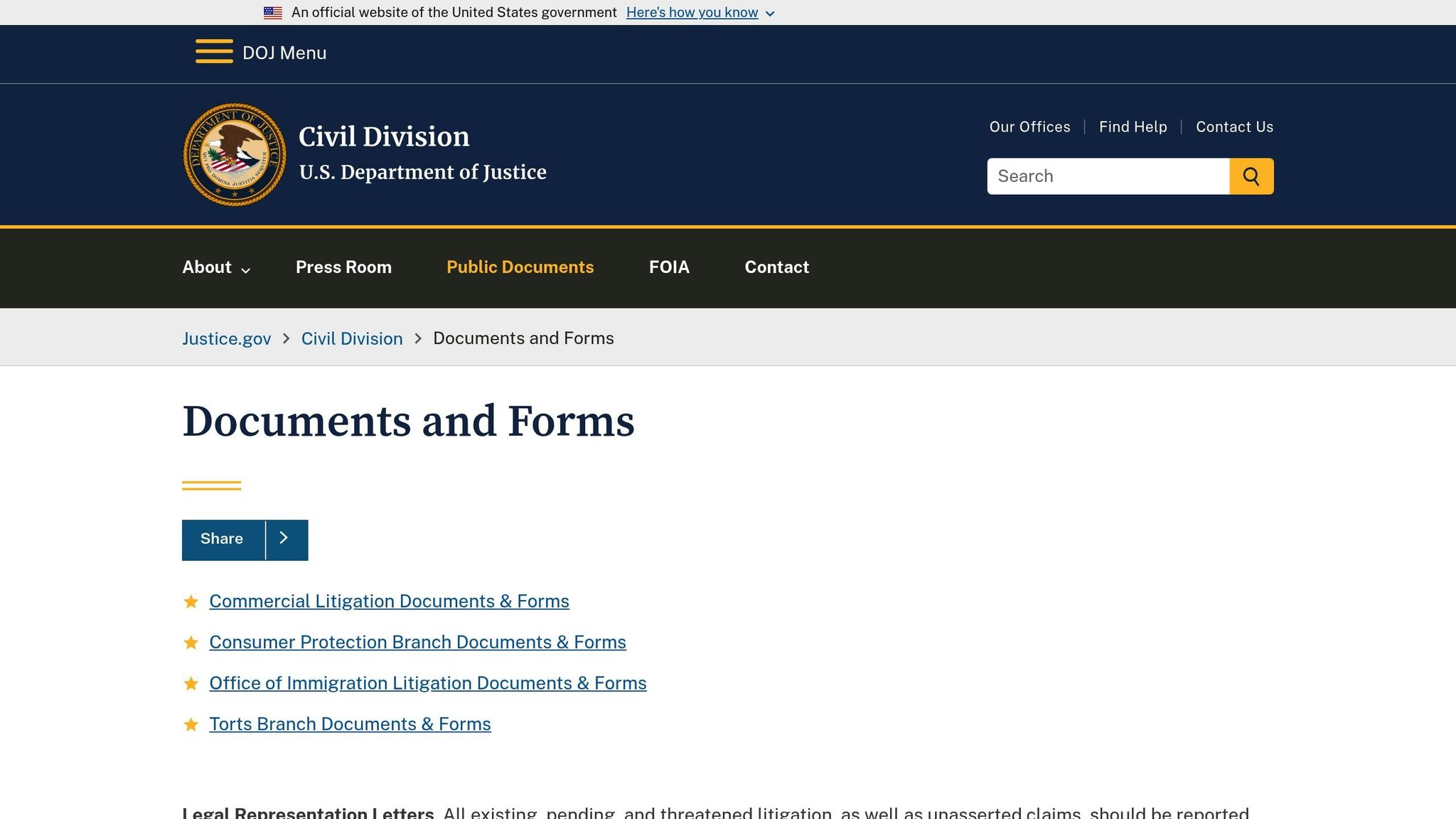If you or a loved one suffered harm due to substandard care at a VA facility, proving negligence is critical. Here’s a quick guide to help you understand the process:
- Four Key Elements of Negligence: Show the provider’s duty of care, how they violated it, how this caused your injury, and the damages you suffered.
- Gather Evidence: Collect medical records, document injuries, and secure expert opinions to establish negligence.
- Filing a Claim: Use Form SF-95 to file under the Federal Tort Claims Act (FTCA). Follow strict deadlines and provide detailed evidence.
- VA Review Process: The VA has six months to review your claim. If denied, you can pursue a federal lawsuit.
For success, focus on thorough documentation, expert testimony, and meeting deadlines. Legal help can simplify the process and improve your chances of compensation.
Negligence in VA Healthcare & 1151 Claims: Hamilton v …
Collecting Evidence
Thorough documentation and expert input are key to building a strong VA malpractice case. Gathering the right evidence can greatly influence the outcome of your claim under the Federal Tort Claims Act.
Getting Your Medical Records
Complete medical records are crucial to proving negligence. VA facilities are obligated to provide these records upon request. To get started, submit a written request to the records department at your VA medical center. Be clear about the timeframe and specify the types of records you need, such as:
- Treatment notes and physician orders
- Lab results and diagnostic imaging
- Medication records
- Surgery reports
- Nursing documentation
- Consultation records
Keep track of when and how you requested your records. Most requests are processed promptly, but complex cases might take longer. After securing your records, the next step is documenting your injuries to link them directly to the substandard care you received.
Recording Your Injuries
When documenting your injuries, include the following details:
- Physical symptoms and limitations
- Mental health impacts
- Daily pain and how it affects your ability to work
- Medical costs
- Lost wages and benefits
Photograph visible injuries whenever possible, and keep a daily journal to track your recovery. Save receipts for all medical-related expenses, including travel costs for treatments, to strengthen your case.
Medical Expert Statements
Expert testimony plays a critical role in proving that your VA healthcare provider failed to meet acceptable medical standards. These statements should come from qualified professionals who can:
- Review your full medical records
- Highlight specific failures in your care
- Show how these failures led to your injuries
- Provide detailed, written opinions
The medical expert must have experience in the relevant field of medicine tied to your case. Their insights establish both the standard of care and how it was not met. Working with an experienced VA malpractice attorney can help you secure expert testimony that aligns with federal tort requirements.
4 Required Elements of Negligence
To prove negligence under the FTCA, you need to establish four essential elements. Using the evidence you’ve gathered, these elements form the legal framework for your claim.
VA Provider’s Duty of Care
Every medical malpractice claim begins by proving that the VA healthcare provider owed you a duty of care. This duty is automatically in place when veterans receive treatment at VA facilities. The provider–patient relationship legally requires VA medical staff to deliver care that meets established medical standards.
Violation of Care Standards
Once the duty of care is confirmed, the next step is proving that the care provided fell below accepted medical standards. Expert testimony plays a critical role here, as it helps to:
- Define what the standard of care should have been
- Highlight where the provider deviated from it
- Explain the correct course of treatment
After identifying these deviations, you’ll need to show how they directly caused your injury.
Linking Negligence to Injury
You must clearly demonstrate that the provider’s negligence directly resulted in your injury. This requires strong medical evidence, including detailed records, expert opinions, and documentation of changes in your health.
Measuring Your Losses
After proving the link between negligence and injury, you’ll need to calculate your damages. This involves documenting all the losses you’ve experienced.
| Type of Loss | Documentation |
|---|---|
| Medical Expenses | Bills, receipts, and estimates for future treatments |
| Lost Income | Pay stubs, tax returns, and employment records |
| Pain and Suffering | Medical assessments and psychological evaluations |
| Disability Impact | Reports on functional capacity and records about limitations in daily life |
Comprehensive documentation of these losses strengthens your case and provides a clearer picture of the harm caused.
sbb-itb-ed66764
FTCA Claim Filing Steps
Once you have gathered your evidence, follow these steps to file your claim under the FTCA.
How to Complete Form SF-95
Standard Form 95 (SF-95) is the required form for filing a VA medical malpractice claim. To fill it out, include the following:
- Your personal information
- A clear description of the incident
- Documentation of your injuries
- Evidence showing negligence
Be sure to provide a detailed explanation of how the VA provider’s actions caused your injuries. This should cover the medical treatment you received, the circumstances surrounding the alleged negligence, and how it has affected your health and ongoing medical needs. Once the form is complete, make sure to adhere to the strict deadlines for filing.
Deadlines for Filing
FTCA claims have firm deadlines, starting from when the injury is discovered through the review process and, if necessary, litigation. Because these cases can be complex, having skilled legal assistance can make a big difference. Archuleta Law Firm, which focuses on VA medical malpractice cases, has over 25 years of experience helping veterans and military families. Their team, which includes both attorneys and medical professionals, can help ensure your SF-95 form is filled out correctly, all necessary information is included, and critical deadlines are met.
VA Claim Review Process
Once you’ve submitted your SF-95 form, the VA follows a specific process to evaluate your medical malpractice claim. Knowing how this works can help you anticipate possible outcomes and decide on your next steps.
6-Month Review Timeline
The VA typically takes six months to review your claim. During this time, they focus on:
- Examining medical records
- Considering expert testimony
- Calculating damages
- Determining whether negligence occurred
After the review, the VA may:
- Approve your claim and propose a settlement
- Request additional details
- Deny your claim
If your claim is denied or the settlement offer falls short, you’ll need to explore other options.
After a Claim Denial
If your claim is rejected or the compensation offered doesn’t meet your expectations, you can file a federal lawsuit under the FTCA. To strengthen your case, it’s essential to provide solid medical evidence and expert testimony. Partnering with attorneys skilled in VA medical malpractice cases – like those at Archuleta Law Firm – can make navigating this complex process much more manageable.
Summary
Building a strong malpractice claim requires solid evidence, expert opinions, and accurate documentation.
Legal Help for VA Cases
Archuleta Law Firm provides a unique blend of medical and legal expertise, thanks to their team of doctor-attorneys and registered nurses. They offer essential insights for reviewing records and identifying negligence.
Here’s how their specialized services benefit veterans:
| Aspect | Benefit to Veterans |
|---|---|
| Case Evaluation | Free initial claim assessment |
| Geographic Reach | Representation across the U.S. and globally |
| Financial Risk | No fees unless compensation is recovered |
| Medical Expertise | In-house medical professionals for case reviews |
| Experience | A proven track record with thousands of FTCA cases |
These services give veterans the support they need to confidently move forward with their claims.
Getting Justice for Veterans
With expert legal assistance, veterans can take meaningful steps toward obtaining the compensation they deserve. Dr. Michael Archuleta emphasizes:
"Veterans have served this country honorably and one of their benefits is VA medical care. When that VA medical care falls to the level of malpractice, I have a passion to help the injured veteran and their family."
Key steps for pursuing compensation include:
- Documenting injuries immediately and meeting FTCA deadlines
- Choosing legal representation with FTCA experience
- Recognizing that compensation benefits both veterans and their families

